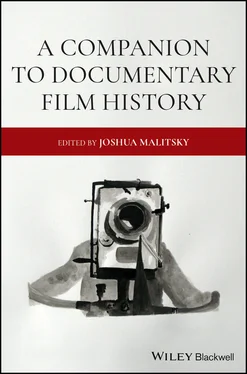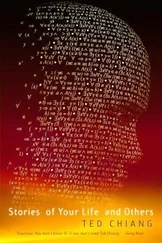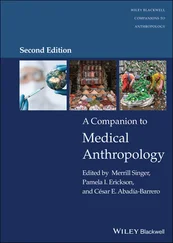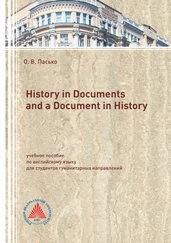As Vautier recounts with evident pleasure, the choreography of confrontation was part of this performance and its historical legacy, since the union organization’s building stood across the square from the police station. This event, even as these circumstances cannot be heard in the film’s soundtrack, could be regarded as a notable episode in the history of documentary recording before direct synchronous sound: “the first French anticolonialist film would be given a soundtrack [ sonorisé ] in the open air, in public, by an African orchestra, under the protection of the working class, and facing the police office charged with seizing it” (Vautier 1998: 43). Closing the circle on the location of production and exhibition, the first screenings of the completed film were organized by Vautier in his Brittany hometown of Quimper, the regional site of his formative French Resistance service. Never seeking nor receiving any visa authorization, the film circulated in 16 mm prints made to be distributed by militant youth and workers’ organizations for noncommercial, private screenings across the country and more widely in Soviet and Eastern bloc film festivals in Warsaw and Leipzig.
The storied history of Afrique 50 , its outlaw defiance, suggests its relation to a longer history of the politics of filmmaking between French metropolitan and colonial sites. More broadly, the history of the technical conditions of Francophone African cinema would be defined by the persistence, well after formal political independence, of this colonial norm of an unequal division between metropolitan and (former) colonial sites across the stages of shooting, film processing, editing, and postproduction mixing. For Afrique 50, every stage after shooting was accomplished in metropolitan France. And yet Afrique 50 troubled such divisions in the labor of production and also did so in this arrangement of sites of performance and recording by cutting across and mixing African and French cultural expression and locations to produce the sound of the film.
The Work of Displacement in the Metropole: Afrique sur Seine , Paulin Vieyra, and the Groupe Africain du Cinéma
The short documentary Afrique sur Seine , shot on black‐and‐white 16 mm film in 1955, might usefully be considered both a film about displacement and a displaced film, and perhaps it has remained so in both documentary and African film historiography since the moment of its limited exhibition in noncommercial screening spaces throughout Paris. Furthermore, Afrique sur Seine is materially linked to Afrique 50 by an act of appropriation that installs a minute‐long sequence from Vautier’s film in this work by Vieyra and the Groupe Africain du Cinéma. This piece of displaced film footage is reused with a new voice‐over that turns the sequence into one about the subjective experience of and development narrative about moving from the colonial territories to the metropolitan center. Even in its title’s punctuation, the film raises the question of geographical and cultural displacement. 13 To speak of “Afrique sur Seine” suggests a town or enclave near water, named on the model of Neuilly‐sur‐Seine, the Paris suburb, or Boulogne‐sur‐mer, the coastal town. Yet it also represents a catachrestic use of language, suggesting that this is a documentary that will propose the improper use of a term. The title Afrique sur Seine may also readily be heard as “Afrique sur scène,” or “Africa on stage,” a play on the representational and performative stakes of the production that would be missed if the film had been given a title such as “Le Quartier africain” or “L’Afrique à Paris.” This form of play implies that beyond its title the documentary explores the translation of this figure of speech into the form of cinema, the use of one bit of language as a placeholder for another, one piece of film as a placeholder for another in a film about place and belonging.
Afrique sur Seine was the first production of the Groupe Africain du Cinéma, a newly formed and short‐lived collective of four young francophone black African filmmaking students, all of whom had disparate backgrounds but had ties to French West Africa, and were linked through formal social organizations and informal circles of overseas students, artists, and intellectuals in Paris. 14 The film was made under the auspices of the Comité du Film Ethnographique, the seat of Jean Rouch’s efforts to support a more inventive form of ethnographic film practice since 1952, situated within the Musée de l’Homme, and it credits the use of materials from its musicology collection. The group’s lack of access to filming in Africa was readily apparent to the makers at the outset. As Rouch later recounted, the young filmmakers attempted to draw on the ethnographic museum’s relationship to Marcel Griaule, the eminent ethnologist, leader of interwar African ethnographic expeditions, and Rouch’s mentor: they “solicited […] an intervention” from Griaule, addressed to the Ministry of Overseas France, “to abrogate the ‘Laval Decree’,” but the appeal did not succeed and no official exception was granted. 15 The Groupe accepted this constraint, working within the state‐centered academic cultural formation of Rouch and the museum world (as uneasily as Rouch at times fit into this milieu), proceeding down a path distinct from the militant labor‐union affiliations of René Vautier.
The Groupe Africain du Cinéma consisted of Paulin Soumanou Vieyra, Mamadou Sarr, Jacques Mélo Kane, and Robert Caristan. Co‐credited for direction and commentary on the film, Paulin Soumanou Vieyra and Mamadou Sarr were both recent graduates of the French national film school IDHEC. Vieyra was born in Dahomey (in the territory that would become Benin), and he had likely gained French citizenship due to his father’s birth in Gorée, one of the Four Communes of Senegal that had been extended citizenship rights, as well as his father’s civil service in the colonial administration. Sarr was born in Senegal. Jacques Mélo Kane, credited as the film’s script manager (under the name “Mélo Khane”), was also Senegalese, and the cinematographer Robert Caristan had been born in French Guiana, bordering Latin America, but grew up in Senegal (his younger brother Georges Caristan would go on to become a preeminent cinematographer, working on Ababacar Samb‐Makharam’s Et la neige n’était plus… [1965] and with Ousmane Sembène). 16
Shot silently and narrated by a post‐synchronized voice‐over, Afrique sur Seine assembles a fragmentary and oblique portrait of the everyday life of black African students living in mid‐fifties Paris around the Latin Quarter and Saint Germain‐des‐Près. In part, the film alludes to the practice of ethnographic documentary, marking its association with the Musée de l’Homme, the central institution of French colonial ethnography. In addition, through the troubled and shifting rhetorical modulations of its mode of address and its revelation of a conflicted subjectivity, the film may now very well appear to documentary film historians – even though the phrase would have had only an emerging currency in the mid‐1950s – as a collective lyrical essay film.
The critical beginnings of a self‐conscious postwar cinematic essay tradition lead back to another project devised within and against this same colonial cultural institution, the Musée de l’Homme: two years earlier, Alain Resnais, Chris Marker, and Ghislain Cloquet made Les Statues meurent aussi [Statues Also Die] (1953), as a documentary on the subject of “black art,” under a commission from the publishing house and journal Présence Africaine . As a site of cultural collecting, exhibition, and the ongoing production of cultural knowledge and heritage inextricable from practices of colonial possession and dispossession, the Musée de l’Homme was used by a generation of makers with some access to its holdings in their own critical discursive investigations into not only the history of colonialism, but also the history of a heritage of colonial documentary moving images and recorded sounds. One might even think of Afrique sur Seine when a key figuration of black documentary image‐making and direct address appears in the final incendiary third of Les statues meurent aussi , devoted to the “art of transition” and “art of the present” made by black artists: we see a shot of a black photographer holding his flashbulb camera aloft and pointed directly toward the viewer, as the narrator speaks of images captured everyday (“the sorcerer captures images everyday”). Statues , banned by French censors, exemplified an emerging current in postwar documentary formal experimentation before cinéma verité , in the form of what Marker would later call a “cinematic pamphlet” (Marker 1961: 9). It did so by working toward a particular transformation of literary essayistic commentary and critique, set in relation to newly shot material but also an intricate montage of preexisting archival documentary and newsreel material. In this light, Afrique sur Seine approached similar problems of construction and enunciation, and it especially sought to settle on a way to assemble new and preexisting footage with a voice‐over narration that could produce a work of collective first‐person subjectivity.
Читать дальше












